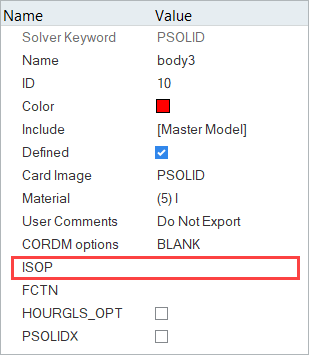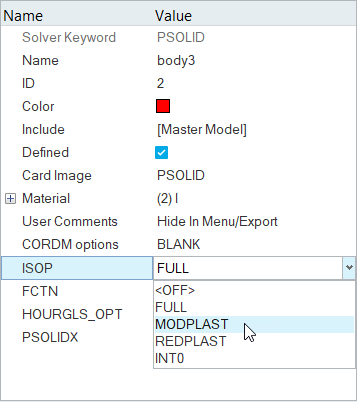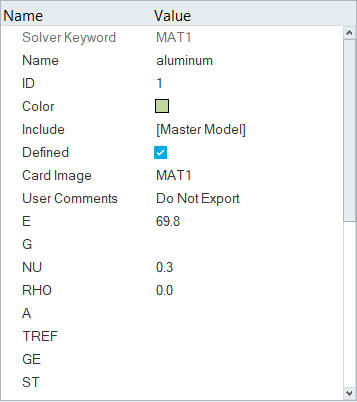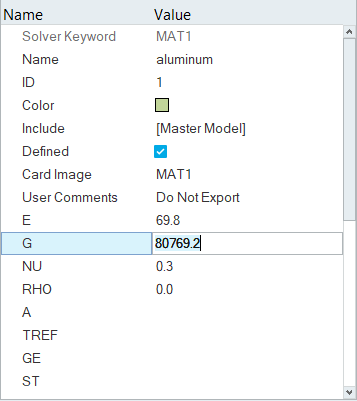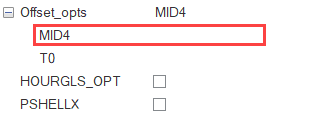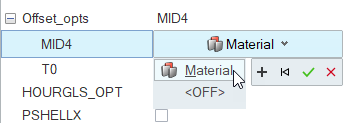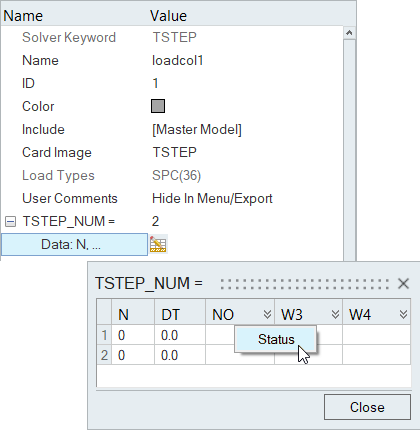Edit Solver Specific Data (Template Data)
Every entity is assigned solver specific data, which you can modify using the Entity Editor.
Assign a Card Image
In the Entity Editor, you can assign a card image to an entity. The card images you are able to assign depend on the user profile you have loaded and the entity type you have selected in the browser.
Import and Export Data
- Import from file
- Append from file
- Export to file
- Import and export functions are not available for 2D arrays or a combination
of 1D and 2D arrays, as in the case of Abaqus.Figure 1. Density Info for ABAQUS_MATERIAL

- Certain control cards make use of unstructured tables. In these cases, array
attributes are shown as new categories/columns and data cannot be
imported/exported.Figure 2.
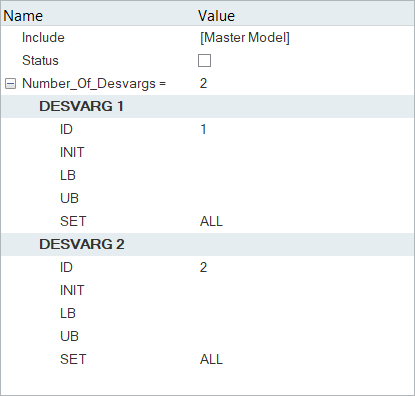
Turn Fields ON or OFF
Assign Entities
In the Entity Editor you can assign certain entities to another entity or a group of entities.
For example, you can assign a property to a component. When an entity has an entity assigned to it, the name and ID of the assigned entity will be displayed in the Value field. If an entity does not have an entity assigned to it, the Value field will display <Unspecified>.
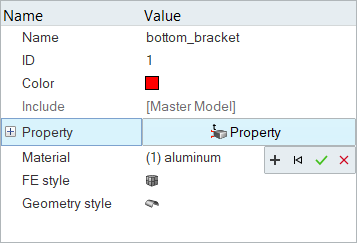
If available, you can expand a drop down menu on the entity selector to view more entity types.
-
Select entities to assign in the following ways:
- Click
 to open the
Advanced Selection dialog. Select entities then
click OK.Tip: You can search for entities in the Advanced Selection dialog by entering a name, ID, or card image in the search field. When you click
to open the
Advanced Selection dialog. Select entities then
click OK.Tip: You can search for entities in the Advanced Selection dialog by entering a name, ID, or card image in the search field. When you click or press Enter, the dialog only displays the entities that
match your search string.
or press Enter, the dialog only displays the entities that
match your search string. - Select entities in the modeling window.
If the Advanced Selection dialog is open, the corresponding entity is automatically selected in the dialog.
- Click
-
To confirm your selection and assign the entity, click
 .
.
-
To clear your selection or unassign an entity, click
 .
.
-
To exit the entity assignment tool, click
 .
.
Resolve Unresolved Entities
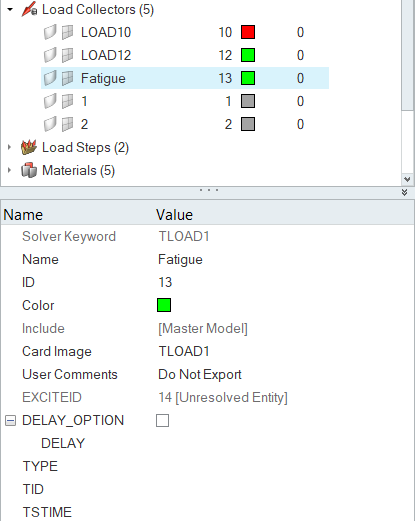
- Right-click on the Name field of the unresolved entity and select Clear unresolved entity from the context menu.
- Click the entity's corresponding Value field.
- Use the entity selector to choose a new entity.
Keyboard Shortcuts
| Function Key | Description |
|---|---|
| Tab | Moves from one row to the next in the Entity Editor. |
| Shift + Tab | Moves to the previous row in the Entity Editor. |
| Spacebar | Activates the Value field of the selected row. |
| Move up and down in the Entity Editor, a list of options in drop-down menus, or in a right-click context menu. | |
| Enter | Accepts the changes made to a parameter in the Value field, or selects an option in a right-click context menu. |
| Esc | Dismisses the changes made to a parameter in the Value field, or closes a right-click context menu. |
